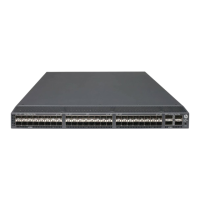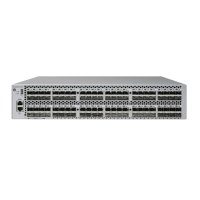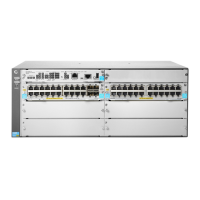83
Parameters
filename: Specifies the name of a local file. For information about the filename argument, see
Fundamentals Configuration Guide.
url url: Specifies the URL of a remote file. Do not include any username or password in the URL.
Case sensitivity and the supported path format type vary by server.
username username: Specifies the username for logging in to the remote device.
cipher: Sets a ciphertext password.
simple: Sets a plaintext password.
key: Specifies the key string. This argument is case sensitive. If simple is specified, it must be a
string of 1 to 32 characters. If cipher is specified, it must be a ciphertext string of 1 to 73 characters.
Usage guidelines
For security purposes, all passwords, including passwords configured in plaintext, are saved in
ciphertext.
With this command executed, the DHCP snooping device backs up DHCP snooping entries
immediately and runs auto backup. The command automatically creates the file if you specify a
non-existent file. The DHCP snooping device, by default, waits 300 seconds after a DHCP snooping
entry change to update the backup file. To change the waiting period, use the dhcp snooping
binding database update interval command. If no DHCP snooping entry changes, the backup file
is not updated.
When the file is on a remote device, follow these restrictions and guidelines to specify the URL,
username, and password:
If the file is on an FTP server, enter URL in the following format: ftp://server address:port/file
path, where the port number is optional.
If the file is on a TFTP server, enter URL in the following format: tftp://server address:port/file
path, where the port number is optional.
The username and password must be the same as those configured on the FTP or TFTP
server. If the server authenticates only the username, the password can be omitted. For
example, enter URL ftp://1.1.1.1/database.dhcp username admin to specify the URL and
username options at the CLI.
If the IP address of the server is an IPv6 address, enclose the address in a pair of brackets, for
example, ftp://[1::1]/database.dhcp.
You can also specify the DNS domain name for the server address field, for example,
ftp://company/database.dhcp.
Examples
# Configure the DHCP snooping device to back up DHCP snooping entries to the file
database.dhcp.
<Sysname> system-view
[Sysname] dhcp snooping binding database filename database.dhcp
# Configure the DHCP snooping device to back up DHCP snooping entries to the file database.dhcp
in the working directory of the FTP server at 10.1.1.1.
<Sysname> system-view
[Sysname] dhcp snooping binding database filename url ftp://10.1.1.1/database.dhcp
username 1 password simple 1
# Configure the DHCP snooping device to back up DHCP snooping entries to the file database.dhcp
in the working directory of the TFTP server at 10.1.1.1.
<Sysname> system-view
[Sysname] dhcp snooping binding database filename tftp://10.1.1.1/database.dhcp

